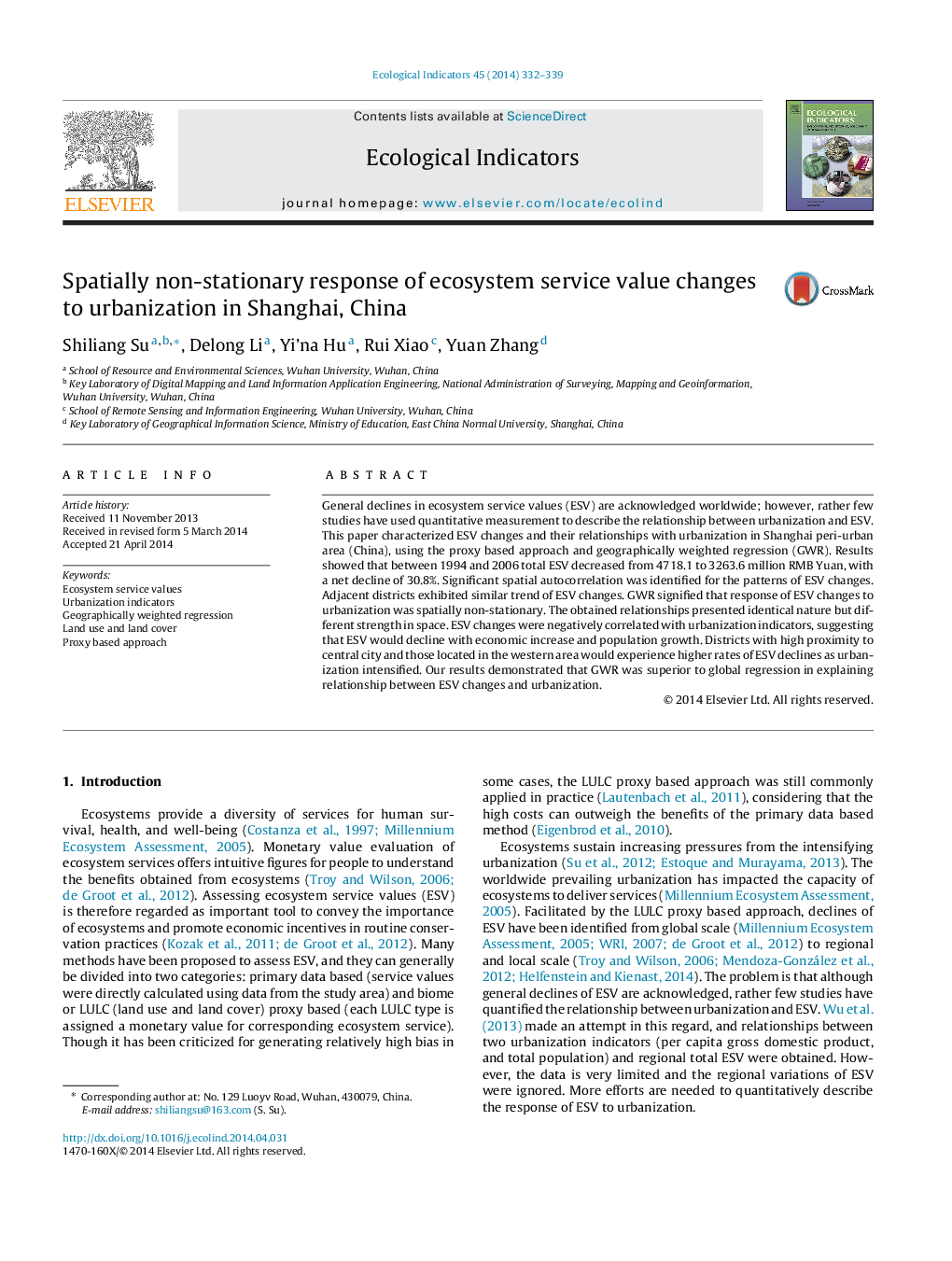| Article ID | Journal | Published Year | Pages | File Type |
|---|---|---|---|---|
| 4373073 | Ecological Indicators | 2014 | 8 Pages |
•Impact of urbanization on ecosystem service values (ESV) was quantified.•Spatial autocorrelation was identified for the patterns of ESV changes.•Spatially non-stationary relationships were obtained.•Relationships presented identical nature but different strength in space.
General declines in ecosystem service values (ESV) are acknowledged worldwide; however, rather few studies have used quantitative measurement to describe the relationship between urbanization and ESV. This paper characterized ESV changes and their relationships with urbanization in Shanghai peri-urban area (China), using the proxy based approach and geographically weighted regression (GWR). Results showed that between 1994 and 2006 total ESV decreased from 4718.1 to 3263.6 million RMB Yuan, with a net decline of 30.8%. Significant spatial autocorrelation was identified for the patterns of ESV changes. Adjacent districts exhibited similar trend of ESV changes. GWR signified that response of ESV changes to urbanization was spatially non-stationary. The obtained relationships presented identical nature but different strength in space. ESV changes were negatively correlated with urbanization indicators, suggesting that ESV would decline with economic increase and population growth. Districts with high proximity to central city and those located in the western area would experience higher rates of ESV declines as urbanization intensified. Our results demonstrated that GWR was superior to global regression in explaining relationship between ESV changes and urbanization.
